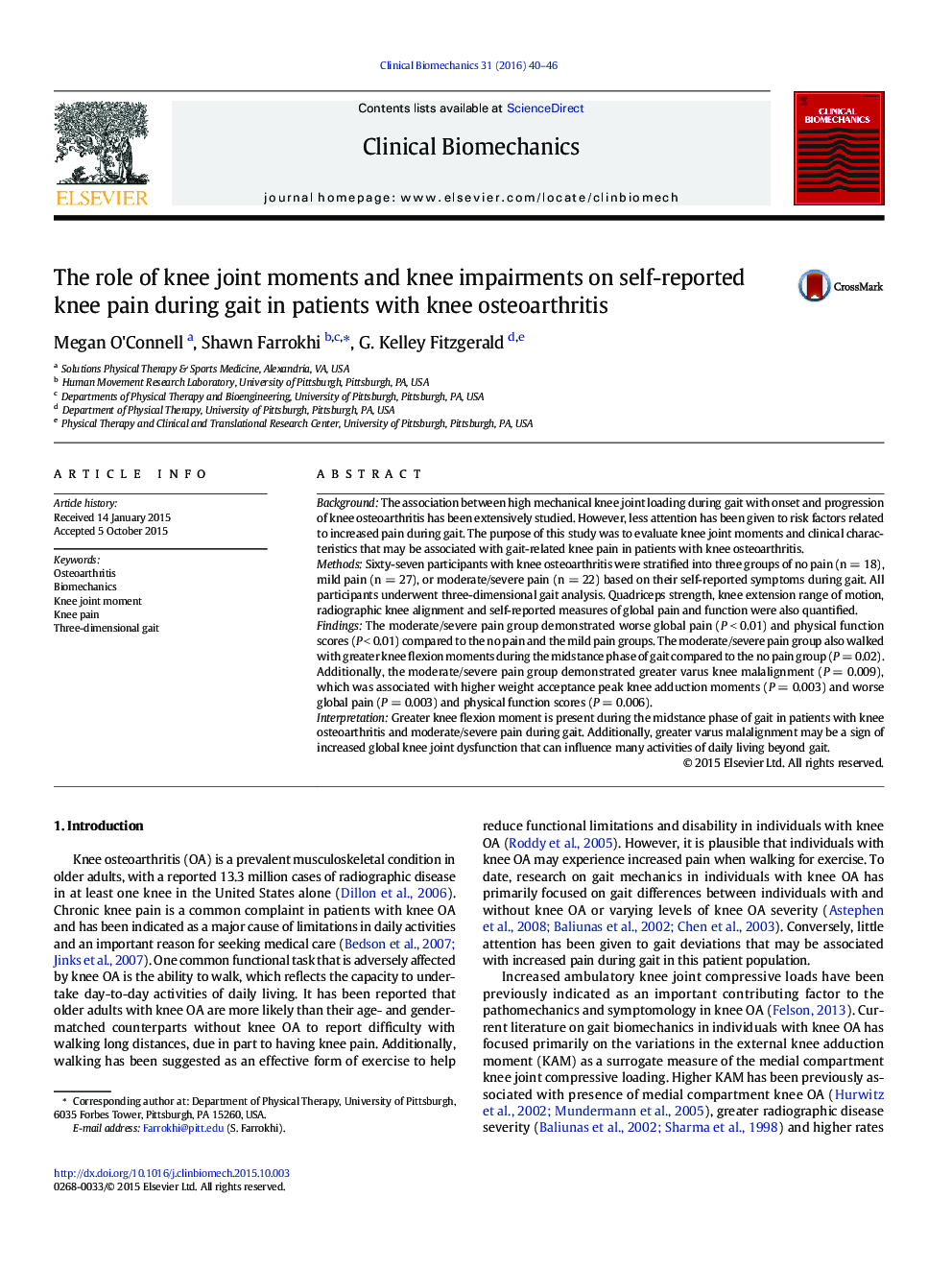| Article ID | Journal | Published Year | Pages | File Type |
|---|---|---|---|---|
| 4050167 | Clinical Biomechanics | 2016 | 7 Pages |
•Knee pain during gait is common in patients with knee osteoarthritis.•Moderate/sever pain was associated with high midstance phase knee flexion moments.•Moreover, moderate/sever pain was associated with greater varus knee malalignment.•Greater knee malalignment was associated with worse global pain and function scores.
BackgroundThe association between high mechanical knee joint loading during gait with onset and progression of knee osteoarthritis has been extensively studied. However, less attention has been given to risk factors related to increased pain during gait. The purpose of this study was to evaluate knee joint moments and clinical characteristics that may be associated with gait-related knee pain in patients with knee osteoarthritis.MethodsSixty-seven participants with knee osteoarthritis were stratified into three groups of no pain (n = 18), mild pain (n = 27), or moderate/severe pain (n = 22) based on their self-reported symptoms during gait. All participants underwent three-dimensional gait analysis. Quadriceps strength, knee extension range of motion, radiographic knee alignment and self-reported measures of global pain and function were also quantified.FindingsThe moderate/severe pain group demonstrated worse global pain (P < 0.01) and physical function scores (P < 0.01) compared to the no pain and the mild pain groups. The moderate/severe pain group also walked with greater knee flexion moments during the midstance phase of gait compared to the no pain group (P = 0.02). Additionally, the moderate/severe pain group demonstrated greater varus knee malalignment (P = 0.009), which was associated with higher weight acceptance peak knee adduction moments (P = 0.003) and worse global pain (P = 0.003) and physical function scores (P = 0.006).InterpretationGreater knee flexion moment is present during the midstance phase of gait in patients with knee osteoarthritis and moderate/severe pain during gait. Additionally, greater varus malalignment may be a sign of increased global knee joint dysfunction that can influence many activities of daily living beyond gait.
